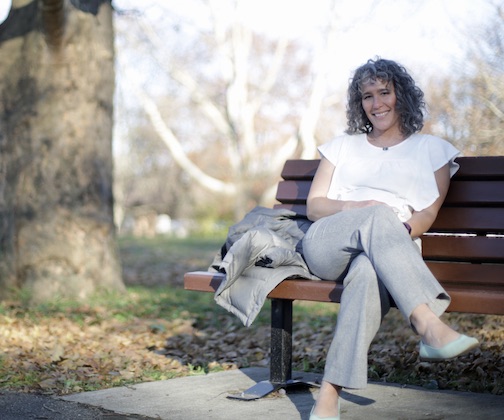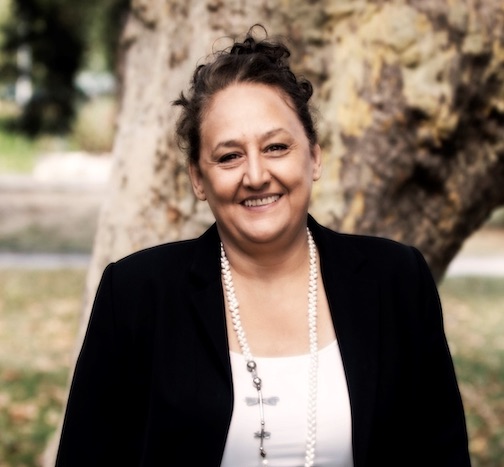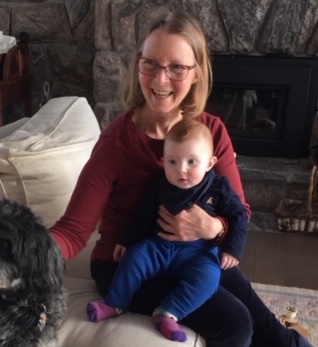A midwife for over 40 years, Judy Rogers pioneered the first midwifery program in the small community of Parry Sound, Canada.
Tell us about your background.
I grew up in Southern California and went to UCLA. When I was 19, I moved to British Columbia and became enamored with Canada, so I dropped out of school. I moved to Nova Scotia with my partner during my pregnancy. I was interested in having a home birth, because it seemed natural. Naively, I thought, "We'll go to a local doctor and find someone who will attend a home birth." I went to five doctors, and they all said no. Some of them said, “You're going to die; your baby is going to die.” I contacted a doctor I’d known in British Columbia and asked if she would be willing to come to the birth, and she said she would love to.
How did having your own child influence your decision to become a midwife?
When my daughter was born after 24 hours of labor, it was so incredible to hold this new being. I wanted to become a midwife so that other women would have a choice in giving birth where and how they wanted. I decided that when my daughter was old enough to be in daycare, I would get training to become a midwife.
Where did you train in midwifery?
In the ‘70s, there was no midwifery school in Canada. So I became a student midwife in the Bolton General Hospital Midwifery School in England. I was in England for 15 years. The first three years I was in school, and then 12 years as a midwife. When I got married, I convinced my British husband to move to Canada.
How did your life change when you moved back to Canada?
Midwifery wasn't legal yet in Canada, but it was formally recognized by the government at the end of ‘93. I was hired to be a faculty member at Ryerson University, in Toronto, one of three universities in Ontario partnering to offer the first Bachelor of Health Science in Midwifery degree. We designed it so that faculty would be half-time midwives. I did that for 25 years and retired two summers ago.
You started your own midwifery practice. What inspired that?
Six years ago I started a practice in a small community called Parry Sound, where there were no midwives. I wanted to be in a more beautiful, quieter place. Part of my research as a professor was looking at rural and remote communities and how midwives could contribute; because in many rural communities, women had to be flown out to a larger community, waiting to go into labor far from their family. I felt midwives should be able to help keep births in communities.
Who are your patients?
We work with five First Nation Indigenous reserve communities. I have a woman in care right now who has leukemia, diagnosed after abnormal results from her first prenatal blood tests. I've never seen that in my entire 40-year career.
What’s a typical day look like for you?
If I'm in the clinic, I've prepped my charts for nine or ten clients. I figure out a client’s gestational age and phase of pregnancy on the day I am seeing her, and the upcoming ultrasounds or tests that I need to give her information about, to see if she wants to have them. I talk about the prenatal classes that are offered. Women need to receive a lot of information in pregnancy, and most come with questions and concerns.
Tell us about your team.
For the first couple of years I was on my own, because I didn't know if the midwifery idea would take off. Today, we have three midwives. When we are on, we are on 24/7. We are based in the community, so we go into the hospital with women in labor.
What are some of the challenges of midwifery?
The hours are unpredictable. You're in some tough situations sometimes, where things aren't going as planned. I can't control everything about birth by a long shot.
And the challenges in your practice?
We don't have any obstetricians here; we don't have any pediatricians; it's just midwives, family physicians and nurses. We have a very underprivileged population, a lot of complexities. I've had more unusual medical complications up here than I've ever experienced. We've had some clients with substance abuse issues. We're very familiar with the resources of the food bank; people don't always have enough to eat.Some people, especially people who have addictions, repeatedly miss appointments.
How many babies have you helped deliver in your career?
I wasn't a midwife at the time, but the first baby I received into my hands was in December, 1973. Since then, I have been privileged to receive around 2,000 babies. In my practice, between 60 and 70 women a year give birth. We have about 10 home births a year.
What is your favorite part of your work?
The satisfaction that women feel when they've had a baby with us, when a woman has gone through labor, and pushed her baby out, and feels well supported. I still feel joy when a woman gives birth, and that baby comes up onto her skin, and she’s so blown away with what she's just done. Postpartum is wonderful, helping women and families and husbands become parents.
What is your best piece of advice, as a midwife?
Every care provider has a kind of tendency. One end of the spectrum is someone who strongly believes that nature always is right, and that the care provider shouldn't interfere at all. At the other end is someone who’d say “Why wouldn't I intervene?” I believe good care is in the middle. Know where your tendency is, and ask yourself: Am I giving care that is in the middle?
Professionally, what are you are most proud of?
How the midwifery profession has grown in Ontario. As a teacher, I could see we were laying the groundwork for the future of the profession. In 1994, there were 68 midwives, and 1,500 women had midwifery care. Now, over 950 midwives are registered, and between 16,000 and 20,000 women receive midwifery care each year. It’s gratifying to have changed a system so much. We were the first province to legally recognize midwifery, and now almost all of Canada has legal recognition.
More Stories from Kinnected

At times, it has been really frustrating to be a strategist and health communication professional and witness the lack of strategic planning and messaging that we have over the last two years.
-
3 years ago

"What many people miss is that emotional exhaustion among clinicians existed long before the pandemic."
-
4 years ago

"A lot of people argue whether technology is good for the future of humanity or bad. In my opinion, it is both - just as an herb could be a poison or a medicine."
-
4 years ago

